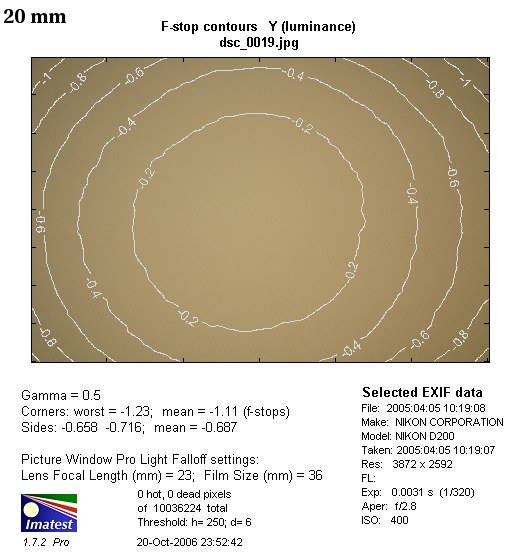Nikon Nikkor AF 20 mm f/2.8D
8. Vignetting
Please Support UsIf you enjoy our reviews and articles, and you want us to continue our work please, support our website by donating through PayPal. The funds are going to be used for paying our editorial team, renting servers, and equipping our testing studio; only that way we will be able to continue providing you interesting content for free. |
- - - - - - - - - - - - - - - - - - - - - - - - - - - - - - - - - - - - - - - - - - - - - - - -
We still remember a very painful slip-up of the Canon 2.8/20 in this category; it was even stranger as that lens was designed for full frame. Let’s remind here that by f/2.8 the Canon had the vignetting on the level of 32%. The Nikon 2.8/20, tested here, for a change can boast of vignetting amounting to…32% (-1.1 f stop!). The result is as bad as that of the Canon because the difference in physical dimensions of the Canon’s 20D and the Nikon’s D200 sensor is negligible. The Nikkor fares a tad better than he Canon on stopping down to f/4.0. The Canon had the brightness loss in the frame corners of 15% and the Nikkor – by 4% less. Only by implementing f/5.6 aperture we see the vignetting reduced to an imperceptible level. It’s awful to imagine what happens on full frame but for the owners of Nikon’s dSLRs it is a purely theoretical problem as that company in its digital line-up offers also reflex cameras with a sensor the size of a 35 mm film.

 |






